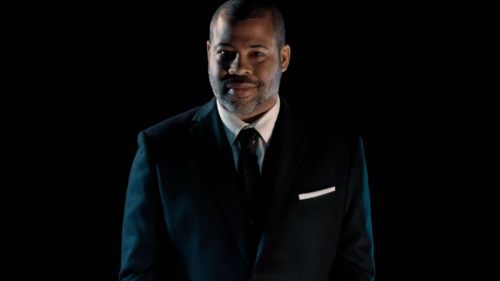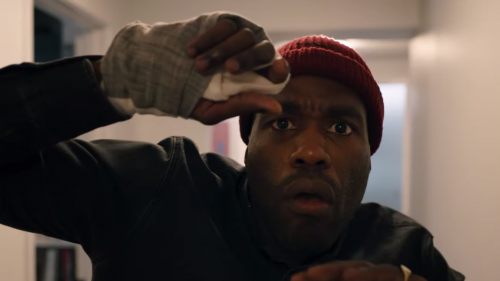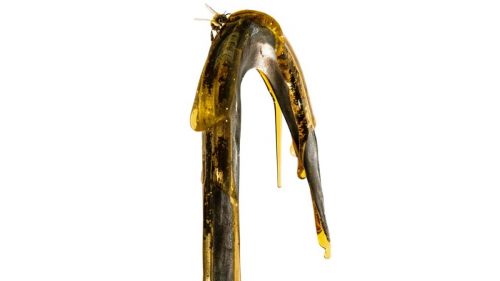Jordan Peele’s US: The Perfect Monster For America
Spoilers for Us to follow.
With Get Out, Jordan Peele codified a horror metaphor for the ages in the Sunken Place. It was such a simple, nerve-wracking, and visually arresting way to present a fear that many Black people have long held, and Get Out was the perfect film to embed that concept in the pop cultural landscape. For Peele’s sophomore feature, following up the Sunken Place with a concept as brilliant as the Sunken Place would have been next to impossible. So instead, Peele used Us to establish a different type of horror staple: a new monster.
Iconic monsters don’t come by very often. I can count on one hand that amount of horror movie villains from the 2010s that will endure as well as the slasher icons of the 1980s, and our era of Trump’s America has yet to find its defining demon (the way Frankenstein’s monster defined the fears of the English Regency, or how H.P. Lovecraft defined the fears of Jim Crow-era racists). Now that Us is finally out, the Tethered are the latest candidate for the movie monster canon. I am in no way qualified to say whether the Tethered will become classic monsters or not, but I can evaluate the creepiness factor they’ve put on display thus far.
Before we can ask “How great are the Tethered?”, we need to ask, “What are the Tethered?” What innate fear do they tap into? What are their closest horror antecedents? Every great monster has an idea it represents, and no great monster has ever come out of a vacuum.
With their blood red jumpsuits and extra-long, extra-intimidating surgical scissors, each member of the Tethered would make for a formidable slasher villain. In fact, that’s partly how they function during the movie’s home invasion sequences. We first meet Red and her Tethered family—our main foes—in the dark of night during a power outage. It’s a scene many have compared to The Strangers, but it’s filmed with enough Peele-brand idiosyncrasy to telegraph to the audience that a straight-up slasher flick isn’t in the cards. If the mise-en-scène isn’t enough, Jason’s (our main character’s son, played Evan Alex) initial description of the shadowy invaders as a “family” quickly establishes that something strange is happening even for horror movie standards.
The threat of the Tethered really becomes clear once the two families are facing each other in the living room. This is the moment our main family all realize they’re being menaced by their own doppelgangers. But then Red (played by an A-game Lupita Nyong’o) has her cryptic, inharmonic monologue, and we learn that the doubles aren’t simply the protagonist’s doppelgangers, but their “shadows.” Peele’s use of the word “shadow” can lead to many interpretations, like in Jungian psychology, where the shadow represents our id—the things we suppress or can’t acknowledge about ourselves. Or in post-colonial theory, where a person’s shadow relates to Fanon’s idea of the “Manichaean delirium”, as is pointed out in Josephine Livingstone’s amazing New Republic article.
The Tethered’s introduction as shadows—along with Red’s fairy tale-like monologue and chilling dual performances by Nyong’o, Alex, Winston Duke, and Shahadi Wright Joseph—evokes the fear of our own selves that has inspired many an evil twin story. Fighting yourself is scary because it’s hard to imagine hurting someone who looks just like you, but it’s easy to imagine all the ways you can get hurt. The irony of being at war with your shadow is that it’s as asymmetrical as a war can get. The tragedy of this type of conflict was enough for Dostoevsky to write about in The Double, and for David Cronenberg to immortalize in Dead Ringers (a film that Peele references several times in Us, as well as in Get Out).
Red doesn’t mince her words when she describes her harsh life in the underground tunnels the Tethered had to call home. During her monologue, she alleges that her life, her marriage, and the birth of her children, were all dictated by Adelaide’s decisions on the ground above her. Later in the film, we get a flashback to Red’s childhood in the rabbit-filled white tunnels, and it all looks like a Lynchian nightmare. The Tethered act like the specters who haunt the Lodges of Twin Peaks. (I would love to know what type of direction Yahya Abdul-Mateen II received to act like the Tethered version of Adelaide’s father.)
Information presented throughout the movie confirms the psychic connection between the Tethered and their hosts. When a host eats anything, their Tethered counterpart consumes raw rabbit. The people enjoying the Santa Cruz amusement park are matched by the Tethered’s imaginary festivities underground. Surgery above ground must be followed by brutal self-surgery in the Tethered world. The rules of the connection change very little once the Tethered reach the surface. Abraham is compelled to push up nonexistent glasses when Gabe does, and Jason takes advantage of his preternatural connection to Pluto (named after the famous The Hills Have Eyes mutant) to get the family out of numerous scrapes.
Yet, for all of Red’s talk about predestination from the above-ground world, Us never unambiguously confirms the true order of correlation between the Tethered and their hosts. During the climactic scenes where the true relationship between Adelaide and Red is elaborated on, Peele makes sure to never show the direct causal link between Red going up the escalator and Adelaide coming down from the boardwalk. We never learn whose will, exactly, caused them to meet in the house of mirrors.
There remains the possibility that, in the film’s world, the Tethered have just as much control over their hosts as the hosts do over them. In real life every day, we imagine we make most of our decisions ourselves, even though most of our decisions have already been made for us, either through genetics, unconscious bias, conditioning, or because of consequences we inherited from people who died centuries ago. If so many unseen forces can drive human behavior in real-life, then why wouldn’t the Tethered be able to metaphysically control the characters of Us. The underground tunnels that host them can just as easily be the connected unconscious, in which case the true horror of Us is the inescapable debt of our psychological needs.
Of course, no reading of the Tethered is complete without mentioning their revolutionary implications. So much has been said about the class uprising themes of Us that I fear making this article redundant, so instead I’ll link respectfully to Brooke Obie’s wonderful piece, which breaks the film down more comprehensively than I ever could. I do need to point out, though, that the social struggle reading of the Tethered complicates them as monsters and renders them more human. There isn’t a more empathic goal than a fight for freedom (at least if you’re not a Nazi). So the terror that comes out of this reading comes not from the fear of the Tethered themselves, but instead from the shame of the things we’ve done—and continue to do—that hurt people.
The Tethered’s ultimate plan was to remake Hands Across America, linking millions of people together across the country, but the visual Peele chooses to end the film with—and something that was motif in Us—is one of separation. Brooke Obie said it best when describing the Tethered in formation as “[looking] like a border wall.” The Tethered in their mobilized state represent the fear of something that has for too long gone unreconciled, and the anxiety that it may never be reconciled. I don’t know if we’ll find a better set of monsters for Trump’s America.



